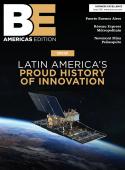Building on┬áexperience┬áCancer Treatment Centers of America planned to open its newest facility before the end of February 2009, but with help from a trusted project manager, the innovative hospital was opened ahead of schedule and under budget, as Keith Regan details. With demand for its specialized services expanding rapidly in the growth area of Phoenix, Arizona, Cancer Treatment Centers of America (CTCA) set out to match that growth with a new world-class patient care facility capable of supporting the companyÔÇÖs lean approach to healthcare. The result is a 210,000-square-foot hospital in the nearby city of Goodyear that reflects the latest concepts and the most up-to-date technologies in specialized care. ┬áThe Phoenix-area hospital is the fourth in the CTCA family of hospitals, joining facilities in Tulsa, Chicago and Philadelphia, with the company planning to add more in coming years.┬áTo make the Arizona project a reality, CTCA turned first to a past partner, the Stonebridge Group, which had worked as ownerÔÇÖs project manager and ownerÔÇÖs representative on another CTCA project at the Southwestern Regional Medical Center in Tulsa. When Stonebridge came aboard, CTCA was still looking in West Phoenix for a possible site, but it soon expanded its search to include Goodyear, where the firm helped find a suitable location, says Stonebridge principal Reed Woods. It also tapped PSA-Dewberry, which had designed the Tulsa building, as the lead architecture firm for the Goodyear project, and Salt Lake CityÔÇôbased Okland Construction as lead contractor. Stonebridge also assembled a broader team of specialty engineers and subcontractors early in the design process, part of an integrated design approach that Woods says enables creative value engineering and the leveraging of contractorsÔÇÖ experience. ÔÇ£A lot of times, if subs are brought in later, numerous key decisions have already been made and they may be difficult or expensive to go back and revisit,ÔÇØ he adds. ÔÇ£If you get them involved early in the creative process of design, you can get the benefit of their years of experience and the creative approaches theyÔÇÖve used on different projects in the past. Even if youÔÇÖve got the best engineers, those contractors can bring added value to the table if theyÔÇÖre there at the right time.ÔÇØThe approach worked, with the CTCA Western Regional Medical Center facility delivered to the owners under budget and ahead of an already aggressive schedule that was moved up in the midst of construction to enable CTCA to take advantage of tax benefits from having the facility open in 2008. The original delivery date of mid-February was shortened by nearly two months, even after the project was under way. ÔÇ£We got together with the contractor and found ways to move the project forward without breaking the budget,ÔÇØ Woods says, with a financial incentive package for early completion part of the approach. ÔÇ£On every project there is an optimum time window when you avoid unnecessary delays but also stay away from paying too much overtime or having subs bumping into each other.ÔÇØThe new facility will now become a showcase for CTCAÔÇÖs lean approach to delivering healthcare. Though it is similar to the Tulsa facility in many respects, it also was built with lessons learned at that site in mind. For instance, every room in the facility will be a universal patient room, capable of being used to deliver both regular care and intensive care. While it requires more up-front investment, such an approach eliminates the need to move patients, a process that can delay healing, as their level of care changes during their stay, Woods says. ÔÇ£It all goes back to the patient-first model, which was very much what was used when the project was designed,ÔÇØ he adds. ÔÇ£We sat down with every department that used the Tulsa facility to find things that they would want to have changed or improved and looked at how this project could build on what was learned up there.ÔÇØCTCAÔÇÖs approach decentralizes services whenever possible, creating smaller and dispersed nursing stations to reduce the time staff members spend walking among rooms and bringing diagnostic equipment to patients whenever possible. The approach is known as the Mother Standard of care, which strives to have each patient treated as if he or she were a family member of the doctors and nurses at the facility. The facility was also designed to be flexible and to be able to grow along with the rapidly evolving technology behind cancer treatment. For example, the Tulsa facility was one of the first in the country to have a built-in TomoTherapy facilityÔÇöa next-generation approach to radiation treatmentsÔÇöand the Goodyear facility was designed not only to accommodate the current technology in that area but also to be expandable and to handle what will come next. ÔÇ£We used a universal vault concept so that as technology improves, the vault is already constructed to be able to handle any piece of equipment that the hospital might want to invest in down the road,ÔÇØ Woods says. ÔÇ£That way, as things change two or three years from nowÔÇöand this is rapidly evolving technologyÔÇöyou wonÔÇÖt have to go back and rebuild the vault.ÔÇØSome elements of green design were incorporated into the project, but the decision was made relatively early on not to invest the resources necessary to earn LEED certification, Woods says. ÔÇ£We looked at a number of things and made the judgment whether they were right for the project rather than looking at it as a way to accumulate points.ÔÇØ For instance, additional funds were invested in the heating and cooling system to make it as efficient as possible, up-front funds that will be paid back quickly. Once again, those decisions were all made with CTCAÔÇÖs patient-first philosophy. ÔÇ£The care being delivered remained the bottom-line goal throughout the project,ÔÇØ Woods adds. ÔÇô Editorial research by Steven Shah┬á









